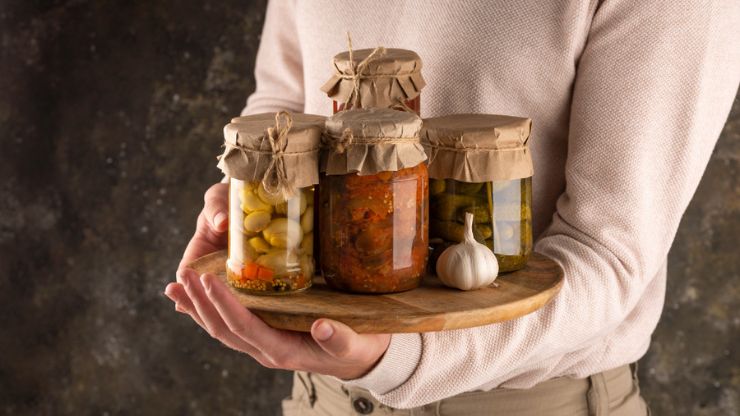Fermented foods have taken the culinary world by storm, offering a delightful blend of flavors and a bounty of health benefits. From tangy sauerkraut to zesty kimchi, homemade fermented foods are not only a treat for your taste buds but also a boon for your gut health. In this article, we dive into the realm of fermentation and present you with easy-to-follow recipes that will elevate your culinary prowess and nourish your body from the inside out.
Table of Contents
ToggleWhat is Fermented Foods?
Fermentation is a natural process that transforms raw ingredients into something magical. It involves the action of beneficial microorganisms like bacteria, yeast, and molds. These microorganisms work their magic by breaking down sugars and other compounds, resulting in foods that are not only delicious but also loaded with probiotics.
The Art of Fermentation
Fermentation is a centuries-old practice that has been passed down through generations. It’s a creative process that allows you to experiment with flavors, textures, and aromas. Whether you’re a novice or a seasoned cook, fermentation offers a canvas for culinary exploration.
Why Make Your Own Fermented Foods?
Crafting your own fermented foods brings a sense of accomplishment and a connection to age-old traditions. You have control over the ingredients, ensuring that your creations are free from unwanted additives. Plus, homemade ferments are bursting with live cultures that are beneficial for your digestive health.
Getting Started: Essential Tools and Ingredients
Before embarking on your fermentation journey, gather a few basic tools: glass jars, airtight lids, a wooden spoon, and a kitchen scale. As for ingredients, opt for fresh, organic produce. The better the ingredients, the better the outcome.
Easy Homemade Sauerkraut
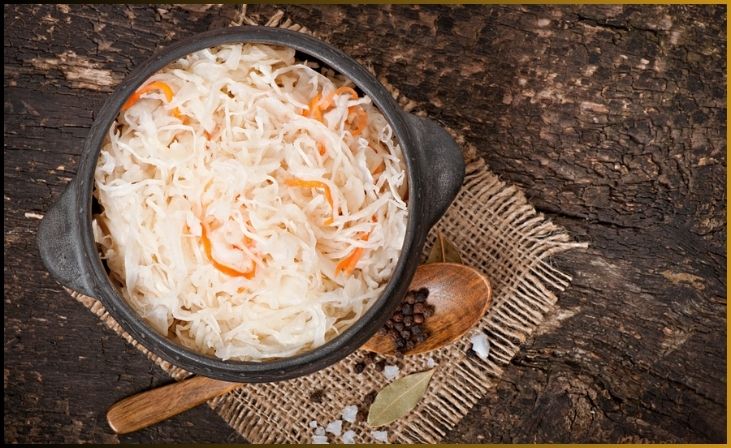
Ingredients:
- 1 medium cabbage, finely shredded
- 1 tablespoon sea salt
Instructions:
- In a large bowl, combine the shredded cabbage and sea salt.
- Massage the cabbage and salt together until the cabbage becomes soft and releases its juices.
- Pack the cabbage tightly into a glass jar, ensuring that the juices cover the cabbage.
- Place a clean cabbage leaf on top as a natural weight to keep the cabbage submerged.
- Seal the jar with an airtight lid.
- Allow the sauerkraut to ferment at room temperature for about 1-2 weeks, checking taste and texture daily.
- Once the desired flavor is achieved, transfer the sauerkraut to the refrigerator to slow down the fermentation process.
Also Read: Health Benefits of Fermented Foods: Fact or Fiction?
Lively Kimchi at Home
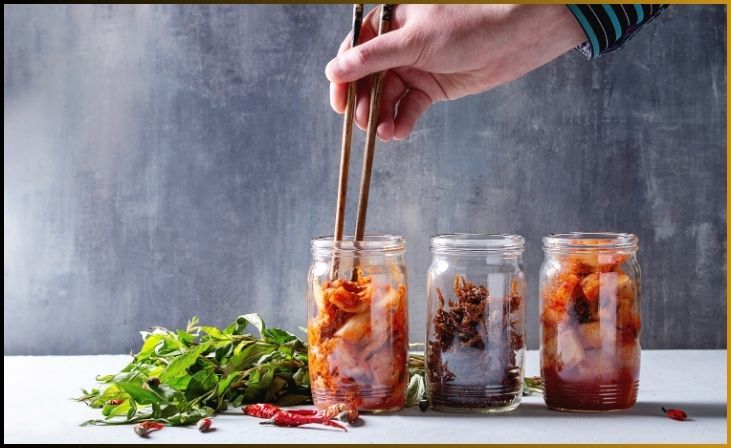
Ingredients:
Don't just scroll, subscribe!
BuzzTrail's unique web-stories are the cure for boredom you've been waiting for.
- 1 Napa cabbage, chopped
- 1/4 cup sea salt
Instructions:
- Dissolve the sea salt in a large bowl of water to create a brine.
- Submerge the chopped cabbage in the brine and let it sit for about 2 hours.
- Rinse the cabbage thoroughly and drain.
- In a separate bowl, create a paste using:
- 2 tablespoons Korean red pepper flakes
- 1 tablespoon grated ginger
- 4 cloves garlic, minced
- 2 tablespoons fish sauce
- 1 tablespoon soy sauce
- Mix the paste with the cabbage until well combined.
- Pack the cabbage mixture tightly into a glass jar, pressing down to remove air bubbles.
- Seal the jar with an airtight lid and let it ferment at room temperature for 3-5 days.
- Once fermented, refrigerate the kimchi to enhance its flavors.
Probiotic-Rich Yogurt Delight

Ingredients:
- 4 cups whole milk
- 2 tablespoons plain yogurt with live cultures
Instructions:
- Heat the milk in a saucepan until it reaches 180°F (82°C), then let it cool to 110°F (43°C).
- Mix in the plain yogurt with live cultures.
- Pour the mixture into glass jars and seal them with lids.
- Incubate the jars in a warm place for 6-12 hours until the yogurt thickens.
- Refrigerate the yogurt to halt the fermentation process.
Tangy Kombucha Brew
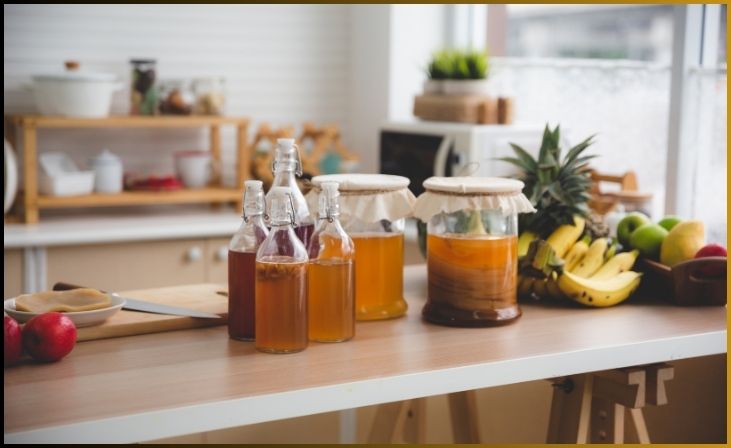
Ingredients:
- 4 black tea bags
- 1 cup granulated sugar
- 1 SCOBY (symbiotic culture of bacteria and yeast)
- 1 cup starter tea
Instructions:
- Brew the black tea in 4 cups of hot water, then dissolve the sugar in it.
- Let the tea cool to room temperature and transfer it to a glass container.
- Add the SCOBY and starter tea to the container.
- Put a clean cloth over the container and fasten it with a rubber band.
- Depending on your taste, let the kombucha brew for 7 to 14 days.
- Once fermented, remove the SCOBY and store the kombucha in airtight bottles.
Fermented Salsa Sensation
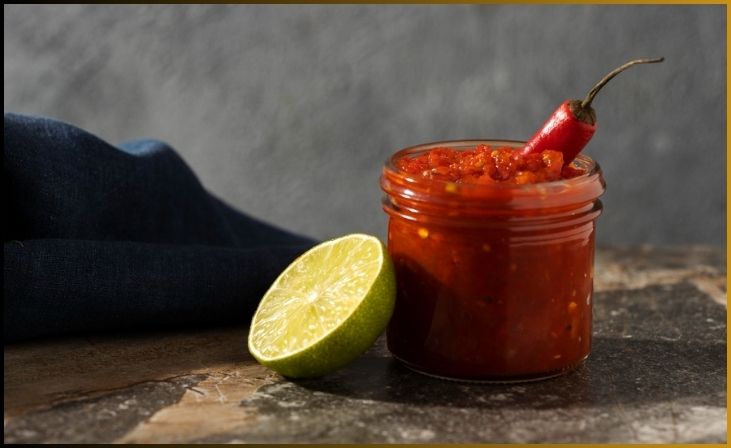
Ingredients:
- 4 ripe tomatoes, chopped
- 1 onion, finely chopped
- 2 jalapeno peppers, seeded and minced
- 1/4 cup fresh cilantro, chopped
- 2 cloves garlic, minced
- Juice of 2 limes
- 1 teaspoon sea salt
Instructions:
- Mix all the ingredients in a bowl.
- Pack the mixture into a glass jar, leaving about 1 inch of space at the top.
- Press down to eliminate air pockets and ensure the mixture is submerged in its juices.
- Seal the jar with an airtight lid and let it ferment at room temperature for 2-3 days.
- Once fermented, transfer the salsa to the refrigerator.
Safety Tips and Considerations
- Hygiene is Key: Always use clean tools, jars, and utensils to prevent unwanted contaminants.
- Keep an Eye Out: Monitor your ferments regularly to catch any signs of mold or spoilage.
- Room Temperature: Fermentation occurs best at room temperature, typically between 65-75°F (18-24°C).
- Gas Release: Fermenting foods release gases, so be prepared for some bubbling or hissing sounds.
- Experiment and Enjoy: Don’t be afraid to get creative with ingredients and flavors. The possibilities are endless!
Conclusion
Creating your own homemade fermented foods is a rewarding endeavor that connects you to tradition and nourishes your body in the process. From tangy sauerkraut to vibrant kimchi, each batch is a culinary masterpiece waiting to be enjoyed. So roll up your sleeves, gather your ingredients, and embark on a fermentation journey that’s as delicious as it is nutritious.
FAQs
How long does it take to ferment these recipes?
How long does it take to ferment these recipes?
Fermentation times vary depending on the recipe. Generally, it can range from a few days to several weeks. Be sure to follow the specific instructions for each recipe for optimal results.
Can I adjust the level of fermentation to suit my taste?
Can I adjust the level of fermentation to suit my taste?
Absolutely! The beauty of homemade fermentation is its flexibility. You can experiment with the fermentation duration to achieve the desired level of tanginess or probiotic content that suits your palate.
Are fermented foods suitable for beginners?
Are fermented foods suitable for beginners?
Yes, many fermented foods are beginner-friendly. Start with simpler recipes like sauerkraut or pickles to get the hang of the fermentation process. As you become more comfortable, you can explore more complex creations like kimchi or kefir.
How should I store fermented foods?
How should I store fermented foods?
Once the fermentation process is complete, transfer the fermented foods to airtight containers and store them in the refrigerator. This helps preserve their freshness and slows down the fermentation process. Always follow the specific storage recommendations provided with each recipe.

